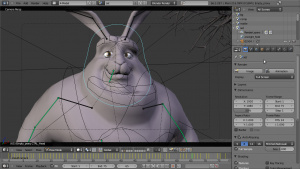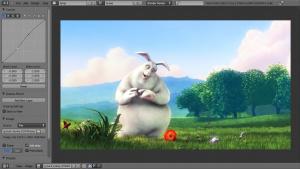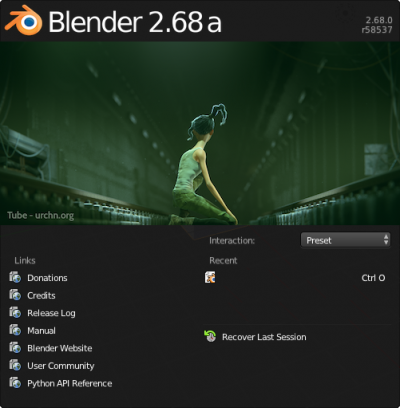「Doc:2.6/Manual/Introduction」の版間の差分
(Minor edit: replace redundant use of acronym.) |
細 (1版 をインポートしました) |
(相違点なし)
| |
2018年6月29日 (金) 03:43時点における最新版
Introduction
Welcome to Blender! The Blender documentation consists of many parts: this user manual, a reference guide, tutorials, forums, and many other web resources. The first part of this manual will guide you through installing Blender, and optionally building Blender from source.
Blender has a powerful interface, highly optimized for 3D graphics production. The large number of buttons and menus might be a bit intimidating at first, but don't worry. After a bit of practice it will become familiar and intuitive.
It is highly recommended you read our section on The Interface carefully to get familiar with both the interface and with the conventions used in the documentation.
What is Blender?
Blender was first conceived in December 1993 and became a usable product in August 1994 as an integrated application that enables the creation of a diverse range of 2D and 3D content. Blender provides a broad spectrum of modeling, texturing, lighting, animation and video post-processing functionality in one package. Through its open architecture, Blender provides cross-platform interoperability, extensibility, an incredibly small footprint, and a tightly integrated workflow. Blender is one of the most popular Open Source 3D graphics applications in the world.
Aimed at media professionals and artists world-wide, Blender can be used to create 3D visualizations and still images, as well as broadcast- and cinema-quality videos, while the incorporation of a real-time 3D engine allows for the creation of 3D interactive content for stand-alone playback or video games.
Originally developed by the company 'Not a Number' (NaN), Blender has continued on as 'Free Software', with the source code available under the GNU General Public License (GPL). The Blender Foundation in the Netherlands coordinates its ongoing development.
Between 2008 and 2010, key parts of Blender were re-written to improve its functions, workflow and interface. The result of this work produced the version of the software known as Blender 2.5.
Key Features:
- Fully integrated creation suite, offering a broad range of essential tools for the creation of 3D content, including modeling, uv mapping, texturing, rigging, skinning, animation, particle and other simulation, scripting, rendering, compositing, post-production, and game creation;
- Cross platform, with an OpenGL GUI that is uniform on all platforms (customizable with python scripts), ready to use for all current versions of Windows (XP, Vista, 7), Linux, OS X, FreeBSD, Sun and numerous other operating systems;
- High quality 3D architecture enabling fast and efficient creation work-flow;
- More than 200,000 downloads of each release (users) worldwide;
- User community support by forums for questions, answers, and critique at http://BlenderArtists.org and news services at http://BlenderNation.com;
- Small executable size, easy distribution.
You can download the latest version of Blender here.
Blender is a full-featured tool
Blender makes it possible to perform a wide range of 3d-content-creation-oriented tasks. Therefore it may seem daunting when first trying to grasp the basics. However, with a bit of motivation and the right learning material, it is possible to be productive with Blender after a few hours of practice. If you're reading this wiki, it is a good start, though it serves more as a reference. You also have online video tutorials (free and paid) from specialized websites, and several books in the Blender store.
Despite everything Blender can do, it remains a tool. Great artists create masterpieces, not only by pressing buttons or manipulating brushes, but also by learning and practicing human anatomy, color theory, composition, lighting, traditional animation, photography, psychology and many other areas. 3D content creation software have the added technical complexity and jargon associated with the underpinning technologies. CPUs, GPUs, memory, algorithms, vectors, materials, meshes are the mediums of the digital artist, and understanding them, even broadly, will help you using Blender to its best.
So keep reading this wiki, learn the great tool that Blender is, keep your mind open to other artistic and technological areas, and you too can become a great artist.


